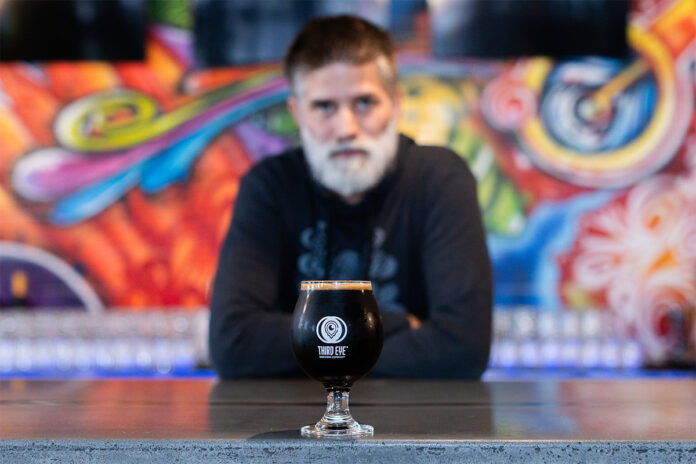Whether you’re scaling up, down, or trying the same recipe on a different brewhouse, you may need to make some adjustments. Third Eye co-owner and head brewer Kelly Montgomery explains some specific changes they make for their stouts at their two breweries.
Third Eye Brewing in suburban Cincinnati has enjoyed a remarkable run of success with their milk and sweet stouts—often enhanced by chocolate, coffee, or spices, sometimes imperial-strength or barrel-aged, but always rich and flavorful yet balanced. On the watch of co-owner and head brewer Kelly Montgomery—the “milk stout whisperer”—Third Eye since 2021 has won five medals for stouts at the Great American Beer Festival and World Beer Cup; three of those medals were golds. (Before that, from 2018 to 2020, Montgomery’s milk stouts also won three straight GABF golds for nearby Brink Brewing.)
In this 68-minute video course packed with useful tips, Montgomery opens the books on their approach to designing and brewing these indulgent yet easily drinkable stouts. Along the way, he covers:
- planning a recipe depending on target flavors
- using the building blocks of malt to hit that target
- using flaked wheat and oats for body, mouthfeel, and head retention
- specific malt types and percentages to achieve different effects
- why chocolate rye and chocolate wheat are the secret weapons
- adjusting the malt base to account for flavor additions
- keeping lactose in balance with the rest of the beer
- adjusting roast malts as the mellow with age
- using dry malt extract to maintain body in imperial stouts
- adding maltodextrin to support a high finishing gravity
- accounting for the perceived bitterness of roast malts and cocoa nibs
- selecting spices for pumpkin stouts, chai stouts, and more
- making a spice slurry to help ensure consistent flavor
- sourcing freshly roasted cocoa nibs for chocolate stouts
- using vanilla extract to boost milk chocolate flavor
- adding fresh beans and cold-brew extract to coffee stouts
- adjusting recipe and process for different equipment
- lengthening the boil to account for additions of lactose, maltodextrin, and malt extract
- water profile, pH, and mash temps for milk and imperial stouts
- using Fermcap to manage big stout fermentations
- adding pumpkin-pie spices to both whirlpool and brite tank for deeper flavor
- pitching big yeast slurries to ferment imperial stouts
- processes for adding various flavor adjuncts on the cold side
- using the “Flavor Blaster 2000” to add extra flavor when needed
- considerations for barrel aging
And more.
Want access to more video courses like this one? All of our subscriptions come with a 100 percent money-back guarantee. Get your All Access Subscription to tap into a library of more than 100 full courses on a diverse range of brewing topics. If you don’t love it, we’re happy to refund your money.

